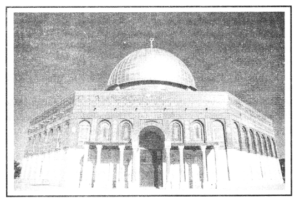Question 1.
What were the features of the lives of the Bedouins in the early seventh century?
Answer:
The Bedouins were Arab tribes. The main features of their lives are as follows:
They led a nomadic life.
They were indulged in looting, plundering and internal quarrels.
They were camel pastoralists and moved with their animals from oases to oases.
Date-palm and camel milk were their main diet.
Their social organisation was based on independent tribes.
Question 2.
What is meant by the term ‘Abbasid revolution’?
Answer:
The term ‘Abbasid revolution’ refers to the Dawa Movement initiated by Abu Muslim from Khurasan against the Umayyad dynasty. This revolution put an end to the Umayyad dynasty, which ruled from 661 to 750. With the fall of Umayyad dynasty in 750, the Abbasid came to power and ruled till 1258.
Question 3.
Give examples of the cosmopolitan character of the states set up by Arabs, Iranians and Turks.
Answer:
Examples of the cosmopolitan character of the states set up by Arabs, Iranians and Turks:
The vast Arab empire was inhabited by the people of multi cultural identities, i.e. the Muslims, the Christians and the Jews.
The Iranian empire witnessed for the development of Muslim and Asian culture.
In Turkish empire, the Egyptian, Iranian, Syrian and Sudanian culture developed simultaneously.
Question 4.
What were the effects of the Crusades on Europe and Asia?
Answer:
Effects of the Crusades on Europe and Asia:
The Crusades resulted in the fall of the authority of feudal lords in Europe and an increased power of the monarch.
These Crusades also resulted into increase in the knowledge of the Europeans. They were surprised to see the progress made by the Muslims in the fields of art, science, and literature.
There was great influence of the Italian mercantile communities in trade between the East and the West.
These also led to change in the method of warfare. For defense purpose, new forts were constructed.
Question 5.
How were Islamic architectural forms different from those of the Roman Empire?
Answer:
Roman architecture: The Roman architectural forms or buildings were solid and magnificent. These features were the key features of the Roman architectural form. It introduced two architectural features the arch and cupolas or domes. There were multi storeyed buildings with one raw arches standing over the another. Round arches were used in city gates, bridges, buildings and monuments of victory. The spread of Christianity gave a new impetus to the building of the Roman empire. St Sophia in Constantinople and buildings in Jerusalem stand witness to the Roman architectural skill.
Islamic architecture: Islamic architectural form represents the great architectural symbol of Islamic world. The Islamic art right from Spain to Central Asia represents some basic architectural features such as horse shoe arches, bubois, domes, minarets, columns and open courtyard. The Islamic architectural pattern of building built around the central courtyard was not only the key features of the mosques but also of sarai (built for carazans) and palaces. Calligraphy and geometric designs were also used to decorate architecture and manuscripts.





